Development largely based on motor-racing experience in AMG GT3 customer sport and the German Touring Car Masters - we take a closer look at Mercedes's new focused machine
Mercedes-AMG continues to grow and is expanding the top end of its product range with the introduction of the new AMG GT R. "Our sports-car and performance brand AMG has its roots in motorsport and, ever since its formation, has repeatedly faced up to the competition on the racetrack. These genes are particularly prevalent in the new AMG GT R. Boasting a wealth of technological innovations, the new top-of-the-range model is proof of the close collaboration between our constructors of racing cars and road-going vehicles," stated Professor Thomas Weber, Member of the Board of Management of Daimler AG, responsible for Group Research and Mercedes‑Benz Cars Development.

The third member of the AMG GT family is the new spearhead of the AMG model range. Featuring pioneering technologies, figures such as 3.6 seconds from 0 to 100Â km/h and a top speed of 318 km/h, combined with the outstanding driving dynamics, will undoubtedly translate into extremely fast laps on the racetrack.
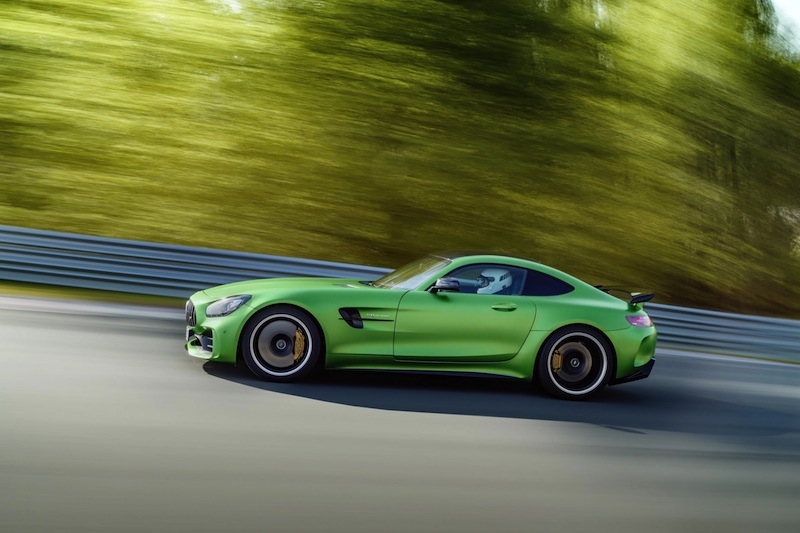
The new exclusive colour, "AMG green hell magno", alone establishes a visual link to the "Green Hell", the nickname for the legendary North Loop of the Nurburgring, emphasising that the car's roots are firmly embedded in the racetrack. The low-slung front section and the forward-inclined radiator grille create a distinctive "shark nose" impression and make the car appear to sit lower on the road. At the same time, this shape lowers the vehicle's back-pressure point, enhancing the flow of cooling air and the car's aerodynamic performance.
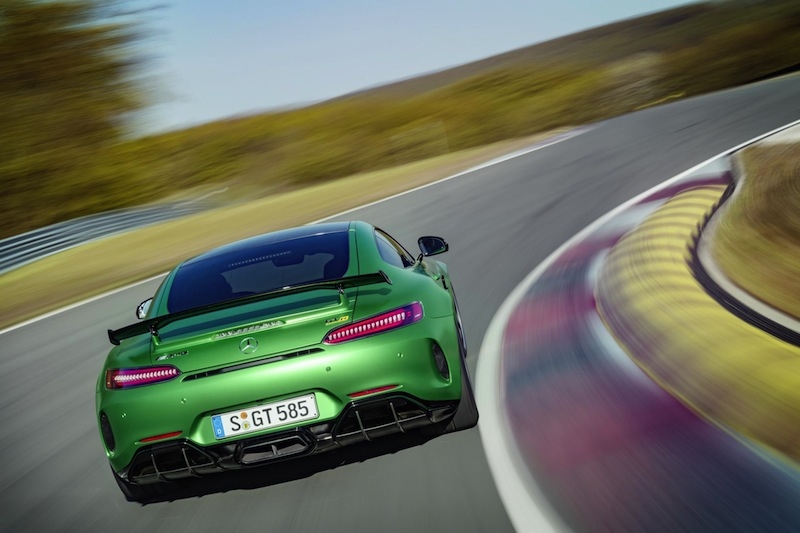
Sharpened racetrack performance comes courtesy of the intelligent lightweight construction incorporating aluminium and carbon, specific reinforcements in the body shell, the uprated twin-turbo V-8 engine with the specifically adapted seven-speed dual-clutch transmission, the innovative aerodynamics with active components, and the new adjustable coil-over suspension with additional electronic control, along with active rear-wheel steering and uniball joints.

Wider front and rear wings allow an increased track width for optimum grip and even higher cornering speeds. The new front fascia with active elements, the large rear aerofoil and the new rear fascia with double diffuser enhance aerodynamic efficiency and help ensure optimum grip. The lightweight forged wheels shod with cup tyres as standard are, likewise, designed for maximum driving dynamics. And not forgetting the nine-way adjustable traction control system.

An engineering feat here is the completely new active aerodynamics profile, which is concealed almost invisibly in the underbody in front of the engine. At a speed of 80 km/h in Race mode, this carbon component, weighing only about two kilograms, automatically moves downward by about 40 millimetres and changes the airflow considerably. This process results in what is known as the Venturi effect, which additionally "sticks" the car onto the road and reduces the front-axle lift by around 40 kilograms at 250 km/h.
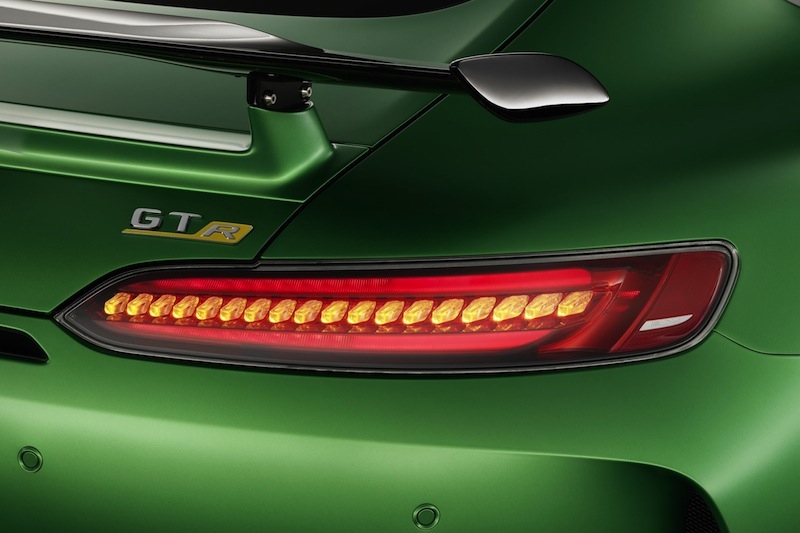
Then in ESP Off mode, another innovation allows the driver to exert even more influence on the handling characteristics of the AMG GT R. The new AMG Traction Control system also comes directly from motorsport. It allows drivers to pre-select the slip on the driven rear axle in nine levels. Just like in the current AMGÂ GT3, it isolates the grip on the driven wheels and does not affect the stabilization provided by the ESP. Corresponding characteristic maps are programmed into the vehicle electronics to this end.
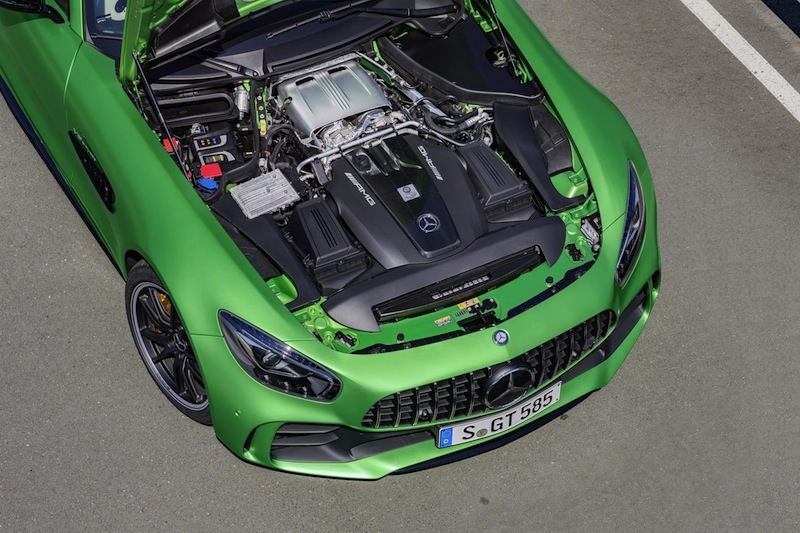
The AMG 4.0-litre twin-turbo engine in the AMG GT R has an output of 585 hp, which is 75 hp more than the previous top-of-the-range GT S. The peak torque of 700 Nm is available between 1,900 and 5,500 rpm. The increase in performance was achieved with the help of new turbochargers with modified compressor machining, smaller wastegate aneroid capsule, and sharpened engine mapping. The boost pressure supplied by the turbochargers has been increased from 1.2 bar in the AMG GT to 1.35 bar. In addition, the exhaust ports have been optimized and the compression ratio modified; the entire combustion process has been retuned.

The seven-speed dual-clutch transmission configured in transaxle layout at the rear axle has, likewise, been extensively revised by the AMG developers, who modified the hardware and the software to make the transmission even more suitable for the racetrack. First gear in the AMG Speedshift DCT 7-speed transmission has a longer ratio, while seventh gear and the final drive have shorter ratios to allow a more agile acceleration experience overall and very spontaneous response to fast accelerator pedal movements.
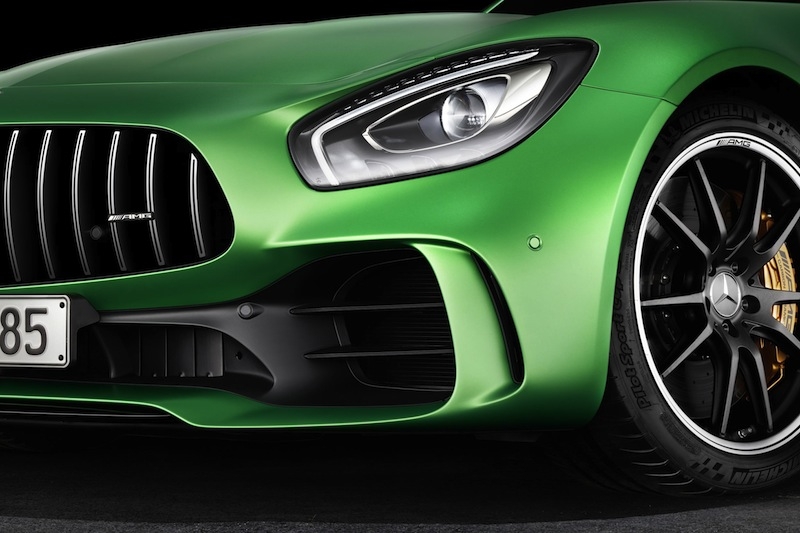
The specially developed exhaust system not only delivers racing car sound, it also saves around six kilograms of weight compared with the AMG GT S's thanks to the use of titanium for the rear silencer and thin-walled stainless steel for the front section of the exhaust system.
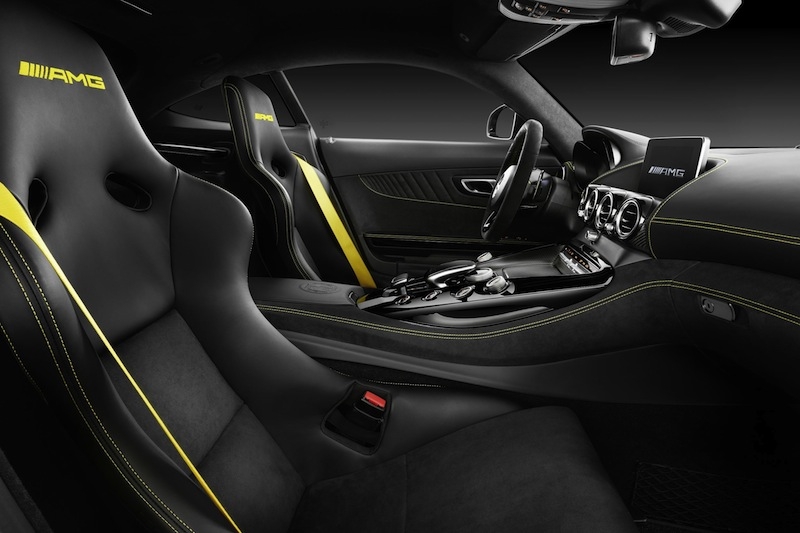
The car will go on sale on 21 November 2016, and the market launch in Europe begins in March 2017.
